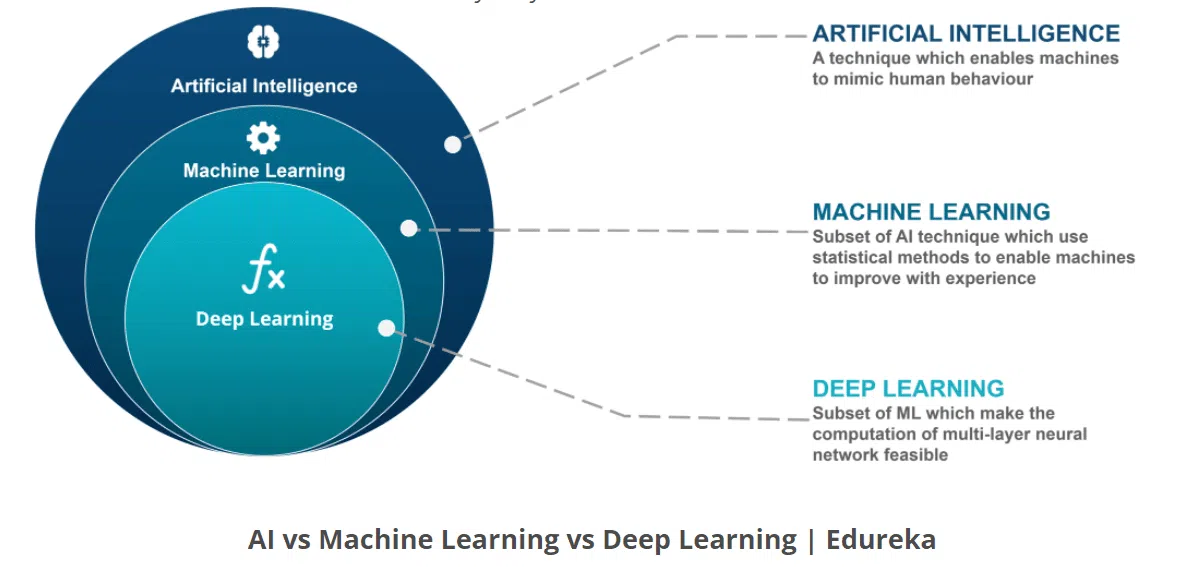There is a lot of confusion surrounding the terms artificial intelligence (AI), machine learning (ML), and deep learning (DL). In this article, we’ll provide a brief introduction to each of these fields to help clear up any confusion.
Artificial intelligence is a broad field that encompasses everything from simple algorithms that can sort data to complex systems that can learn and innovate on their own. Machine learning is a subset of AI that deals with algorithms that learn from data. Deep learning is a type of machine learning that uses neural networks to learn from data.
Artificial intelligence is the process of creating intelligent machines. It involves creating algorithms, or sets of rules, that can learn and make decisions on their own. AI can be used to create systems that can solve problems, recognize patterns, and make predictions.
Machine learning is a type of AI that deals with algorithms that learn from data. Machine learning algorithms are able to automatically improve given more data. For example, a machine learning algorithm could be used to automatically identify objects in pictures.
Deep learning is a type of machine learning that uses neural networks to learn from data.. Deep learning algorithms are able to automatically improve given more data. For example, a deep learning algorithm could be used to automatically identify objects in pictures.
Image Credits : Edureka.com
What is Artificial Learning?
Artificial learning (AL) is a process of programming computers to learn from data, without being explicitly programmed. AL is related to the field of machine learning, which deals with the design and development of algorithms that allow computers to learn.
AL has been used in a variety of applications, including facial recognition, spam filtering, and medical diagnosis. In recent years, there has been a growing interest in using AL to develop autonomous vehicles.
AL algorithms are generally divided into two categories: supervised learning and unsupervised learning. Supervised learning algorithms are used when the data is labeled, meaning that there is a known correct output for each input. Unsupervised learning algorithms are used when the data is not labeled, meaning that there is no known correct output for each input.
AL is a relatively new field, and there is still much research that needs to be done in order to further improve the accuracy and efficiency of AL algorithms. However, the potential applications of AL are vast, and it is expected that this technology will continue to grow in popularity in the years to come.
What is Machine Learning?
Machine learning is a branch of artificial intelligence that deals with the design and development of algorithms that can learn from data and improve their performance over time. Machine learning algorithms have been used in a variety of applications, such as facial recognition, speech recognition, and recommender systems.
Machine learning is a relatively new field, and it is constantly evolving. There are different types of machine learning algorithms, and each has its own advantages and disadvantages.
Supervised learning algorithms are the most commonly used type of machine learning algorithm. These algorithms learn from labeled training data. The labels can be anything, such as whether an email is spam or not, or whether a picture contains a cat or not.
Unsupervised learning algorithms learn from unlabeled data. These algorithms try to find patterns in the data. For example, they can be used to cluster data points into groups. Reinforcement learning algorithms learn by trial and error, like humans do. They are often used in games, such as chess or Go, to learn how to play the game better.
Machine learning is a powerful tool that can be used to solve many problems. However, it is important to remember that machine learning algorithms are only as good as the data they are given. If the data is of poor quality, the algorithms will not be able to learn from it and will not be able to produce good results.
What is Deep learning?
Deep learning has been used to achieve state-of-the-art results in many fields, including computer vision, natural language processing, and robotics. There are many different types of deep learning algorithms, including convolutional neural networks, recurrent neural networks, and autoencoders.
Deep learning is a relatively new field and is constantly evolving. New architectures and techniques are being developed all the time.
Despite these challenges, deep learning is an exciting field with a lot of potential. It has already achieved some amazing results and will continue to do so in the future.
Difference between AI and Machine learning and Deep Learning-
1. Artificial intelligence, machine learning, and deep learning are all terms used to describe various methods of teaching computers to make decisions or perform tasks.
2. AI is the broadest category and includes any method of teaching a computer to make decisions or perform tasks.
3. Machine learning is a subset of AI that focuses on using mathematical algorithms to learn from data, without being explicitly programmed to do so.
4. Deep learning is a subset of machine learning that focuses on using neural networks to learn from data.
5. AI, machine learning, and deep learning all have the same goal of teaching computers to make decisions or perform tasks, but they differ in their approach.
6. AI is the broadest category and includes any method of teaching a computer to make decisions or perform tasks.
7. Machine learning is a subset of AI that focuses on using mathematical algorithms to learn from data, without being explicitly programmed to do so.
8. Deep learning is a subset of machine learning that focuses on using neural networks to learn from data.
9. AI, machine learning, and deep learning all have the same goal of teaching computers to make decisions or perform tasks, but they differ in their approach.
10. AI is the broadest category and includes any method of teaching a computer to make decisions or perform tasks. Machine learning is a subset of AI that focuses on using mathematical algorithms to learn from data, without being explicitly programmed to do so. Deep learning is a subset of machine learning that focuses on using neural networks to learn from data.
11. AI, machine learning, and deep learning all have the same goal of teaching computers to make decisions or perform tasks, but they differ in their approach.
12. AI is the broadest category and includes any method of teaching a computer to make decisions or perform tasks.
13. Machine learning is a subset of AI that focuses on using mathematical algorithms to learn from data, without being explicitly programmed to do so.
14. Deep learning is a subset of machine learning that focuses on using neural networks to learn from data.
15. AI, machine learning, and deep learning all have the same goal of teaching computers to make decisions or perform tasks, but they differ in their approach.
Conclusion- AI vs Machine Learning vs Deep Learning
AI, Machine learning, and Deep learning are all terms that are often used interchangeably. However, they are actually quite different from each other. ai is the most general of the three and refers to any computer system that can learn on its own. Machine learning is a subset of AI that involves teaching computers to learn by example. Deep learning is a type of machine learning that uses artificial neural networks to simulate the workings of the human brain.
If you’re interested in expanding your career opportunities in this intriguing field, check out Edureka Deep Learning Course. This course educates students on the skills, techniques, and equipment necessary to enhance their careers.
Are you unsure how to proceed once you’ve grasped the fundamentals of Machine Learning? Consider Edureka’s Machine Learning Certification, which will set you up for success in this intriguing profession. Learn about the principles of machine learning, the procedures and methods involved in unsupervised and supervised learning, mathematical and heuristic components of machine learning, and hands-on modelling to construct algorithms. You will be equipped for a position as a Machine Learning engineer after completing this course.
Additionally, you can enroll in a master’s programme in machine learning. The curriculum will educate you in-depth and practically on machine learning applications in real-world settings. Additionally, you’ll study the fundamentals of machine learning, including statistical analysis, Python, and data science.
Also Read:




